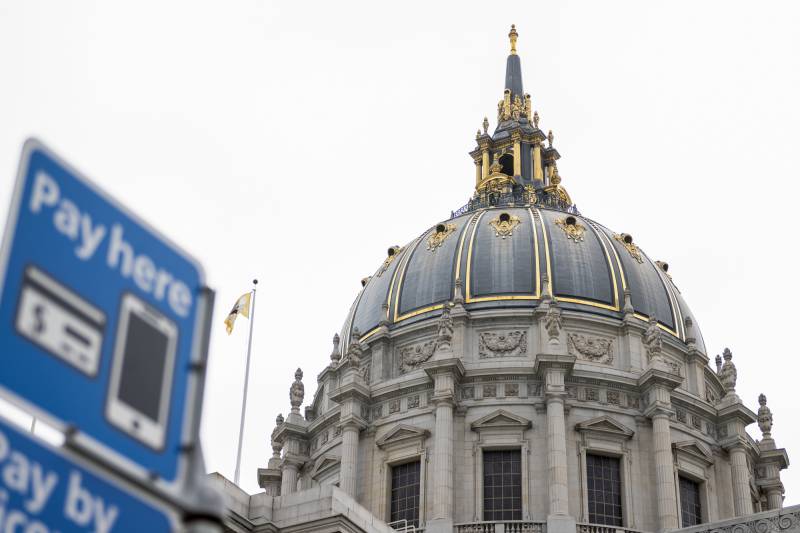Like San José, San Francisco’s budget also includes funding to increase the city’s police force. The police department budget grew by 8.5%, enough to hire 220 officers in the coming years. Public pressure to address a feared rise in crime prompted most lawmakers to back the mayor’s plan to increase the police department, one of the largest expansions in San Francisco’s spending plan, even as other departments were asked to take a cut.
San Francisco’s shrinking daytime population and vacant office space blew a $780 million hole in San Francisco’s budget. Escalating health insurance costs and pensions contributed, as well.
But the way lawmakers plugged that hole won’t hold for long. The city’s two-year budget was balanced using nearly $1 billion in one-time funds.
This funding comes from a number of sources, including an opioid lawsuit settlement against Walgreens, FEMA reimbursements for emergency pandemic spending and various reserve funds.
The use of one-time sources to meet a budget need isn’t unheard of. And according to the City Controller’s Office, the use of one-time funding falls within the city’s legally mandated limits. But in a budget briefing letter, the controller also warned, “The use of one-time or nonrecurring sources to support ongoing operations creates a future budget shortfall, requiring expenditures to be reduced or replacement resources identified.”
That means it’s the budget equivalent of using chewing gum to plug a leak. If downtown doesn’t boom like a Gold Rush in the near future, then San Francisco lawmakers will need to make drastic cuts in future budgets.
The two-year budget is often revised in its second year so lawmakers can adjust it to the realities of tax revenue projections. If the projections don’t hold, Breed can look forward to a bitter fight over what departments to cut during her mayoral re-election bid.
This year’s budget process didn’t turn into the bloodbath many predicted it would. But that could happen soon.
A five-year estimate issued by the City Controller’s Office, Mayor’s Office and Board of Supervisors’ Budget and Legislative Analyst foresees growing budget shortfalls in the coming years, starting at $488.9 million in 2024–2025 and reaching $1.3 billion in the 2027–2028 budget.
In some good news for the city, San Francisco’s tourism tax dollars are already rebounding. But it’s not enough money to offset a shrinking tax base from a massive dip in office use. A variety of taxes are tied to how many people work in San Francisco, from property taxes to various business taxes, and all of those have taken a hit post-pandemic.
Seeing this all coming down the pike, Mayor Breed and Board of Supervisors President Aaron Peskin passed legislation to foster economic growth downtown. Much of that was supported in this year’s budget, including a program to waive city fees for small businesses in their first year of operation, and the “vacant to vibrant” program which will help artists beautify empty ground-floor spaces, and give grants to business owners to fill those storefronts.
Studies have cited San Francisco’s reliance on the tech industry and the outsized impact of work-from-home as a major factor in its slow recovery from the pandemic. Now the city is trying to attract new businesses downtown to generate more city revenue.
When the mayor and Board of Supervisors clash over the budget, it’s actually over a very small slice of the overall $14.6 billion pie. Ultimately, the Board of Supervisors reallocated $70 million after their weeks-long negotiations with the mayor.
To put that into perspective, that’s less than 1% of the budget.


